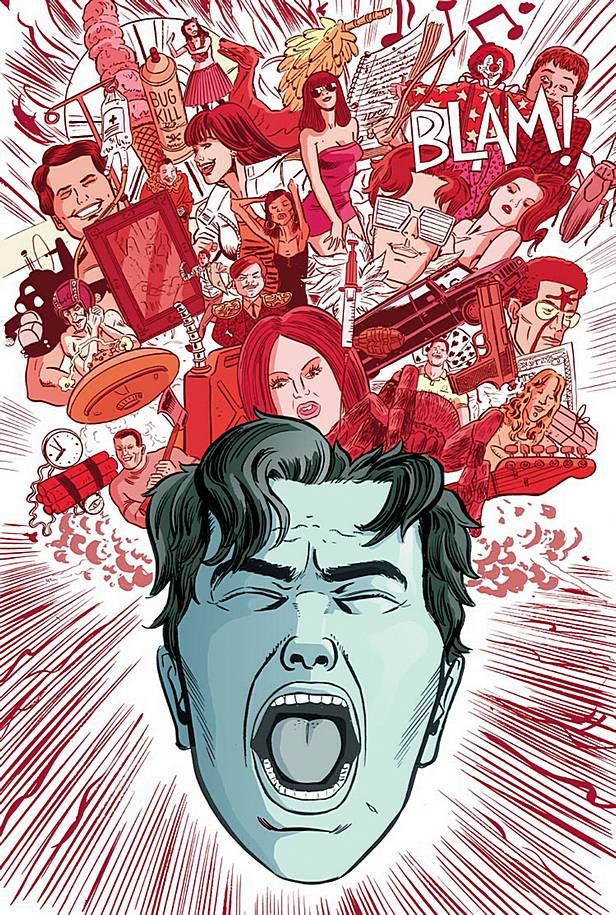Johnny Jukebox lives the perfect life. He's a rock star. He parties every night. He lives with a woman he's in love with. He has sex with other women and his girlfriend doesn't care. His best friend from high school is still his best friend. He's never heard of Danny Noonan. He looks just like Danny Noonan and his girlfriend is Loreli, the sister of Sadie, who Danny went to find last issue. So long Johnny Jukebox?
"Young Liars" #13 reads like an episode of "The Prisoner," with the audience very much aware that nothing is right and the protagonist slowly comes to the same realization. Who can he trust? Who's a victim? Who's a warder? And, so, he slowly pushes back, begins to test the limits of his new world to see just how far he can go. One day, he tramples Loreli's rose bushes and the next day, they're back. What if he were to burn his house down? What if his best friend, Kenny were to get his head beaten in? How far can he go until the illusion won't hold, until the true nature of the world must reveal itself?
David Lapham writes this book like a teenager with ADD, constantly shifting gears and creating new status quos. Last issue, everything we knew was revealed to be wrong and, here, again, everything is wrong! Forget Danny Noonan, meet Johnny Jukebox! You like Johnny Jukebox? Well, maybe we'll bring back Danny... of course, he could just be crazy! There's no place for the reader to gain a solid grasp on the new reality before it's revealed a sham. Most impressive is that it works.
"Young Liars" seems always on the verge of devolving into an endless string of "shocking" reveals that make each successive one less impacting and meaningful, but Lapham grounds these reveals in his characters. The shocking thing in this issue isn't the new world, it's the apathetic manner in which Johnny goes about destroying it. Unlike "The Prisoner," Johnny/Danny is no clever, scheming, dedicated Number Six; he's a slacker rock star who seems more amused by the idea that everything he knew was wrong than pissed off.
That casual attitude is apparent in Lapham's art as everything about Johnny/Danny's body language is relaxed, his face one of distant bemusement always verging on a sneer that will never come. The odd panel of shock or real emotion is buried under pages of goofy grins and blank stares. While he does work to find out the truth, Lapham makes sure he always looks at least partially complacent in the world around him. The art always reminds us that, yeah, maybe the objective truth is good, but the lie isn't so bad, and Johnny agrees with that assessment.
Despite having numerous callbacks to the first year of the series, "Young Liars" #13 is a good place for new readers to jump aboard as everything they need know is forgotten by page one. As Johnny remembers Danny, gaps are filled in for him and new readers. Jump aboard now and experience the insanity that is "Young Liars," quite possibly the best book on the stands!

